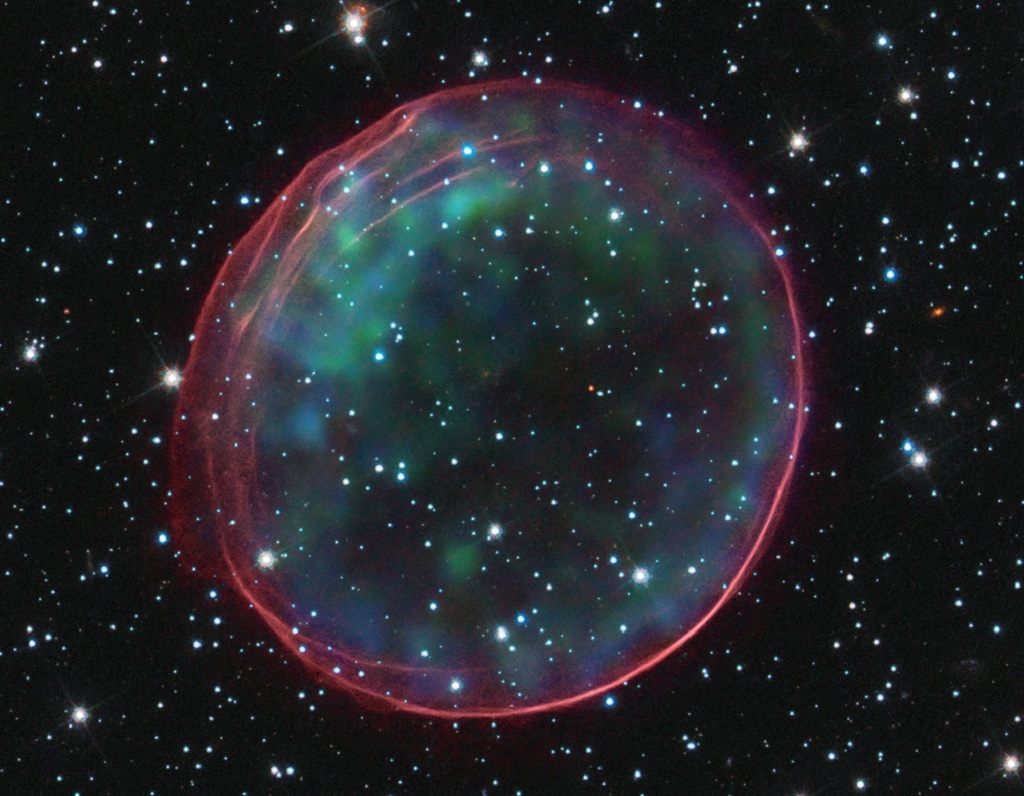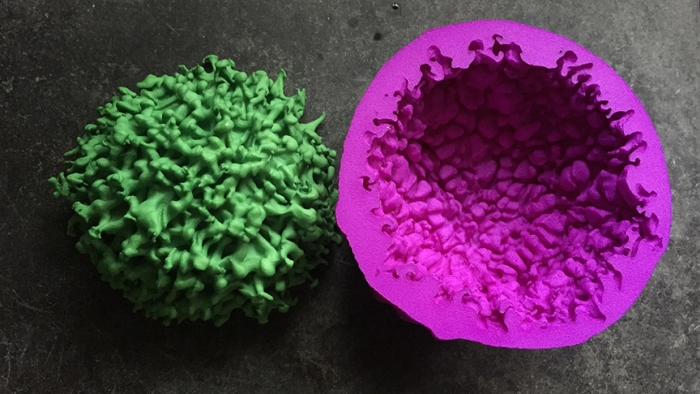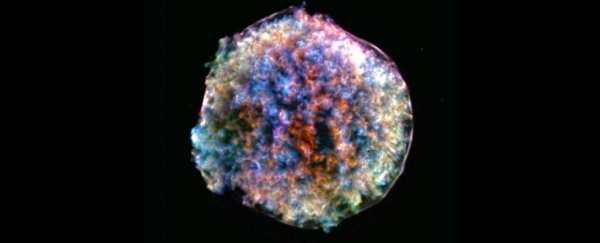In November 1572, a star exploded. It brightened in the night sky, until it was visible to the naked eye - a jaw-dropping phenomenon observed and documented by astronomers around the world, none more extensively than Danish astronomer Tycho Brahe, for whom the supernova was eventually named.
Hundreds of years later, Tycho's supernova remnant (also known as SN 1572 or B Cassiopeiae) continues to confound astronomers. It doesn't look like other supernovae - it's all clumpy and knotty. But now simulations are helping figure out how it got that way.
The supernova in question is what is known as a Type Ia, and they occur when a white dwarf in a binary system sucks so much matter from its companion that it triggers a runaway reaction, and the white dwarf goes spectacularly kaboom.
What's left behind, though, isn't usually quite so messily clumped as Tycho's supernova remnant. Take the silky-smooth SNR-0509 (below), which blew up around 400 years ago, for example.
 SNR-0509 (NASA/ESA/Hubble Heritage Team (STScI/AURA)
SNR-0509 (NASA/ESA/Hubble Heritage Team (STScI/AURA)
Or SN 1006, which blew up in 1006 CE, and has a sort of mildly clumpy section.
But it's nothing like Tycho's supernova remnant.
X-ray observations of the nebula reveal that, although the shape of Tycho's supernova remnant is more or less spherical, its actual surface is wildly uneven.
In the most recent image taken by the Chandra X-ray Observatory above, silicon moving away from Earth is coloured blue, while silicon moving towards us is coloured red.
Other elements moving in a variety of directions at different velocities are shown in other colours.
There are two options for these crazy dynamics: either they were created at the time of explosion, or they started to occur after the star had gone supernova.
To figure it out, an international team of astronomers conducted a series of simulations.
 This 3D-printed model emphasises the remnants clumpiness. (RIKEN/G. Ferrand, et al & NASA/CXC/SAO/A. Jubett, N. Wolk & K. Arcand)
This 3D-printed model emphasises the remnants clumpiness. (RIKEN/G. Ferrand, et al & NASA/CXC/SAO/A. Jubett, N. Wolk & K. Arcand)
They modelled the supernova explosion as clumpy from the start; and also as a smooth explosion, with the clumpiness appearing afterwards. And they found that the clumpiness was most likely produced during the supernova explosion.
How? Well, that's another mystery. But, the astronomers said, it could have turned out that way if the explosion ignited at many spots around the star, instead of just one.
Wouldn't that be a thing to see.
The research was published in July in The Astrophysical Journal.
